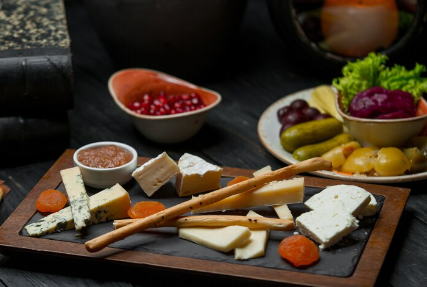Grouse Cheese: A Complete Guide to This Rare and Flavorful Specialty

Grouse cheese is one of those rare and intriguing specialty cheeses that instantly spark curiosity among gourmet food enthusiasts. Known for its distinctive flavor profile and artisanal production methods, Grouse cheese is slowly gaining recognition among cheese lovers who seek something different from the typical varieties. This cheese, often crafted in small batches using traditional techniques, draws inspiration from the robust and earthy qualities of the wild grouse habitats, pairing beautifully with fine wines and game dishes. In this article, we’ll take an in-depth look at Grouse cheese, its origins, flavor characteristics, culinary uses, and why it deserves a spot on your tasting list.
The Origins and History of Grouse Cheese
To truly appreciate Grouse cheese, it’s important to understand its origins and background. This cheese is believed to have originated in regions where wild grouse birds are common, and where artisanal cheesemaking traditions have existed for centuries. Farmers in these areas developed Grouse cheese as a local delicacy, combining the rich milk from pasture-raised animals with natural aging techniques to create a robust, game-friendly cheese. Over time, Grouse cheese became a hidden gem in local markets, known only to specialty shops and culinary connoisseurs who appreciate rare cheeses with a story behind them. Its history reflects the dedication and craftsmanship of small-scale cheesemakers who prioritize quality over mass production.
Flavor Profile and Texture of Grouse Cheese
Grouse cheese offers a tasting experience unlike any standard cheese on the market. Its flavor is rich, slightly earthy, and deeply savory, often described as having subtle game-like undertones that complement the wild and rustic essence associated with grouse habitats. The cheese’s texture can vary depending on its aging process—young Grouse cheese tends to be semi-soft and creamy, while aged versions develop a firmer, crumbly texture with concentrated flavors. Its aroma is bold yet refined, making it an ideal cheese for food lovers who enjoy complex and adventurous taste experiences. This distinctive profile makes Grouse cheese stand out on any cheese board.
Culinary Uses: How to Serve and Pair Grouse Cheese
The culinary versatility of Grouse cheese is one of its biggest attractions. It pairs exceptionally well with roasted game meats such as grouse, venison, and duck, making it a favorite among chefs preparing rich, hearty dishes. It can be melted into creamy sauces, grated over root vegetables, or served alongside fruit preserves and artisanal bread on a gourmet platter. Wine pairings are equally rewarding—try Grouse cheese with full-bodied red wines like Syrah or Cabernet Sauvignon, or even a dry Sherry to highlight its earthy depth. Whether used as a centerpiece ingredient or a refined accent, Grouse cheese elevates every dish it touches.
Health Benefits and Nutritional Aspects of Grouse Cheese
While Grouse cheese is primarily appreciated for its flavor, it also offers several nutritional benefits when consumed in moderation. Like many artisan cheeses, it is rich in high-quality protein, calcium, and essential vitamins such as vitamin A and B12. The natural fermentation and aging processes may also contribute to healthy gut bacteria, supporting digestion. Because Grouse cheese is often made from pasture-fed milk without industrial additives, it tends to be more nutrient-dense than many commercial cheeses. However, it is important to enjoy it in balance, as it is also higher in fats and sodium due to its concentrated aging process.
Why Grouse Cheese Is Becoming a Gourmet Favorite
In recent years, Grouse cheese has seen rising popularity in fine dining and gourmet markets. Food enthusiasts are increasingly seeking out unique and handcrafted cheeses that tell a story and offer an experience beyond the ordinary. Chefs love working with Grouse cheese because it brings depth, complexity, and a sense of place to their culinary creations. Specialty cheese shops and delicatessens are also beginning to stock Grouse cheese as demand grows among adventurous customers. This rising trend positions Grouse cheese as a future staple in high-end gastronomy, perfect for those who want to explore beyond conventional flavors.
Conclusion: The Art of Enjoying Grouse Cheese
Grouse cheese is more than just an ingredient—it’s a culinary experience that celebrates tradition, craftsmanship, and bold flavor. With its rich taste, artisanal origins, and versatility in gourmet cooking, Grouse cheese deserves a place in the spotlight for anyone passionate about fine food. As it continues to gain recognition in gourmet circles, this cheese stands as a symbol of how traditional methods and local heritage can create something truly extraordinary. Whether you’re a seasoned cheese aficionado or a curious newcomer, tasting Grouse cheese is a flavorful journey worth taking.
FAQs About Grouse Cheese
Q1: What is Grouse cheese made from?
A: Grouse cheese is typically made from high-quality cow’s or goat’s milk sourced from pasture-raised animals and aged using traditional artisanal methods.
Q2: Does Grouse cheese contain actual grouse meat?
A: No, Grouse cheese does not contain grouse meat. The name is inspired by its origin in regions where grouse birds are common, and by its earthy, game-like flavor.
Q3: How should I store Grouse cheese?
A: Store Grouse cheese wrapped in wax paper or cheese paper inside the refrigerator. Keep it in a slightly humid environment and allow it to come to room temperature before serving.
Q4: Where can I buy Grouse cheese?
A: Grouse cheese is usually available in specialty cheese shops, gourmet food markets, and select online retailers that carry artisanal or rare cheeses.
Q5: What wines pair best with Grouse cheese?
A: Full-bodied reds like Syrah, Cabernet Sauvignon, or dry Sherry pair wonderfully with Grouse cheese, highlighting its earthy and complex flavors.